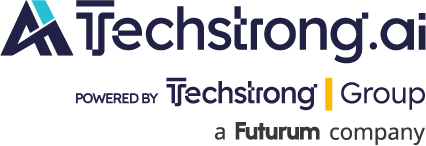
In 2025, the web is witnessing a transformative moment: The emergence of AI-powered browsers that promise to reshape how we interact with the internet. This new “AI Browser Race” is not just a technological sprint but a fundamental shift toward what experts are calling the dawn of Web AI. The market is shifting from traditional multi-tab browsing to AI agent-led interactions where natural language queries and context-aware responses are central.
Perplexity’s Comet Browser, launched in July 2025 for premium users, replaces traditional tabs and search bars with an AI chatbot that acts as a “thought partner.” Users can ask the AI to conduct price comparisons, research and even make reservations, turning the browser into a proactive assistant rather than a passive tool.
The Browser Company’s Dia Search, another notable contender released in mid-2025, reimagines browsing as a conversational interface. Beyond responding to queries, Dia integrates writing support, content summarization and productivity tools like to-do list generation.
Another ambitious player, Opera, is developing its Neon browser featuring an AI agent capable of autonomously creating content such as games, reports and websites — even performing tasks offline. This showcases the potential of AI to serve as a creator and collaborator within the browsing environment.
Lastly, recent news covering Perplexity bidding for Chrome means acquiring far more than code. The AI Browser Race aligns with broader AI trends in 2025. The Great AI Browser Race is revolutionizing the fundamental way we interact with the internet. By embedding intelligence directly into browsers, the promise of a more intuitive, productive and secure Web AI is becoming reality.
Future Evolution of AI Browsers
The future evolution of AI browsers is poised at an exciting intersection of open source community development, emerging standards and AI agent platforms that collectively promise to reshape how users interact with the web and AI itself.
- Open Source Community as a Catalyst for Innovation: Open Source has long been a foundational driver of technological progress by fostering collaboration, transparency and shared ownership across diverse communities. Developers can tailor the AI browser’s functionalities to fit specific use cases. Projects like Steel Browser, an open source browser API that focuses on enabling AI agents and apps to interact with the web seamlessly and Browserbase, more of an infrastructure platform than purely open source offer excellent starting points with rich feature sets and active communities.
- Emergence of Open Standards and Interoperability: As AI browsers evolve, the establishment of open standards becomes critical to ensure interoperability, security and user control. Open standards can facilitate consistent APIs, data formats and protocols that AI browsers and AI agents use to interact smoothly with web content and services. The web platform itself has seen collaborative initiatives such as Interop 2022 and Interop 2025, involving key browser vendors like Google, Mozilla, Apple and Microsoft. These projects target the resolution of 15 critical areas impacting cross-browser compatibility, including CSS properties, form controls, typography and advanced web APIs. Another example is the Agent2Agent (A2A) protocol promoting AI agent interoperability through open standards.
- AI Agent Platforms as the Foundation for Intelligent Browsing: AI agents embedded in browsers represent a new paradigm of intelligent browsing. They understand context, automate tasks and interact with web content autonomously, transforming the web from a static information space to a dynamic interactive environment.
- Democratization and Ethical AI Development: AI browsers collect not just traditional browsing data but nuanced conversational data revealing user intent, behaviors and preferences. AI browsers enable new ad formats like conversational ads and AI-sponsored recommendations, shifting the advertising model from static and keyword-based to interactive and contextual. While this can increase relevance and user experience, it also risks embedding advertising more deeply into everyday AI interactions, which poses ethical questions about manipulation, consent and transparency.
AI Browsers – What can go Wrong
As AI continues to integrate deeper into everyday web usage, awareness and proactive security approaches are critical to harness its benefits while minimizing the risks. Until browsers evolve to manage AI agents securely, organizations should treat them as a new class of insider threat requiring careful oversight.
- AI Browser Agents as the “New Weakest Link” : Unlike human employees, AI browser agents lack security intuition. They cannot recognize suspicious URLs, excessive permission requests, or unusual website designs.
- Malicious AI Browser Extensions: The proliferation of AI-powered browser extensions adds another layer of risk. Some extensions are outright malware designed to steal sensitive information such as cookies, session tokens, or even entire accounts. For example, a malicious Chrome extension once hijacked users’ Facebook accounts and stole all stored browser cookies, affecting thousands before being removed.
- AI Model and Data Integrity Attacks: AI systems in browsers rely heavily on data for training and decision-making. Attackers may poison this data or manipulate AI models through adversarial attacks, leading to incorrect security decisions and enabling attackers to bypass AI-powered defenses.
To mitigate these threats, browser developers, AI providers and enterprises must develop native guardrails and stricter permission controls specifically for AI browser agents, implement browser detection and response solutions that can distinguish actions taken by AI agents from those of real users and enforce rigorous vetting and monitoring of AI-powered browser extensions to prevent malware.
Roles for Practitioners in AI Browser Development
AI browser development and management demand a multifaceted team of practitioners with technical mastery, critical thinking and ethical awareness.
- AI Integration Specialists: Professionals will focus on embedding advanced AI models into browsers to enhance functionality and intelligence, balancing performance and resource use.
- UX/UI Designers: They will design interfaces that make AI-assisted browsing intuitive, providing transparent AI use indicators and catering to hyper-personalized experiences.
- Data Privacy and Ethics Officers: Critical to the future AI browser ecosystem, these practitioners will ensure responsible AI use, manage data privacy compliance and maintain transparency with users.
- Cybersecurity Experts: Practitioners in security will implement and oversee real-time AI-based threat detection and mitigation techniques to safeguard users.
- Content and AI Transparency Managers: They will oversee how AI-generated content is flagged and explained to users, ensuring trust and ethical AI communication in the browser environment.
Practitioners equipped with these skills not only contribute to cutting-edge technology but also ensure the AI within browsers respects user privacy, fairness and transparency, paving the way for the future of browsing.
Evolving Role of Management for AI Browser Adoption
With AI increasingly handling routine and creative tasks, managers transition from executors to orchestrators. Their role broadens to holistic oversight that integrates AI performance, user impact and business outcomes. This evolution demands new leadership skills and a deeper understanding of AI technologies and their societal implications.
- Ethics and Responsible AI Use: Managers promote ethical AI practices in browser development and deployment. This includes advocating for transparency, fairness and accountability to build trust among users and stakeholders. Ethical considerations are especially important as AI browsers handle sensitive user data and automate complex decision-making processes.
- Strategic Alignment and Technology Selection: Management has to work closely with practitioners to align AI browser initiatives with business strategies. They assess the feasibility of AI technologies, select those that meet organizational goals and balance innovation with risk aversion.
- Governance and Risk Management: Effective management involves setting up continuous evaluation procedures for deployed AI browsers, collecting and analyzing user feedback, and establishing incident response protocols. Managers implement feedback channels, monitor for model drift and oversee updates to maintain system integrity and smooth user interactions.
- Leading AI-Driven Teams and Collaboration: Developing and managing AI-enhanced browsers demands a multidisciplinary team that combines technical expertise, critical thinking and strong ethical awareness. Successful AI-driven teams collaborate across roles that bring together advanced AI integration, user-centered design, privacy and ethical governance, cybersecurity and transparent content management +. Leading such teams requires not only technical and managerial skills but also a commitment to maintaining the delicate balance between innovation, usability and ethics in creating the next generation of AI-powered browsers.
In summary, the future of AI browsers lies in the synergy of open source community innovation, open standards fostering interoperability and robust AI agent platforms enabling autonomous and personalized web interactions. This trajectory invites stakeholders, developers, companies, regulators and end-users to embrace collaboration and open principles for creating AI browsers that truly serve community’s best interests.

